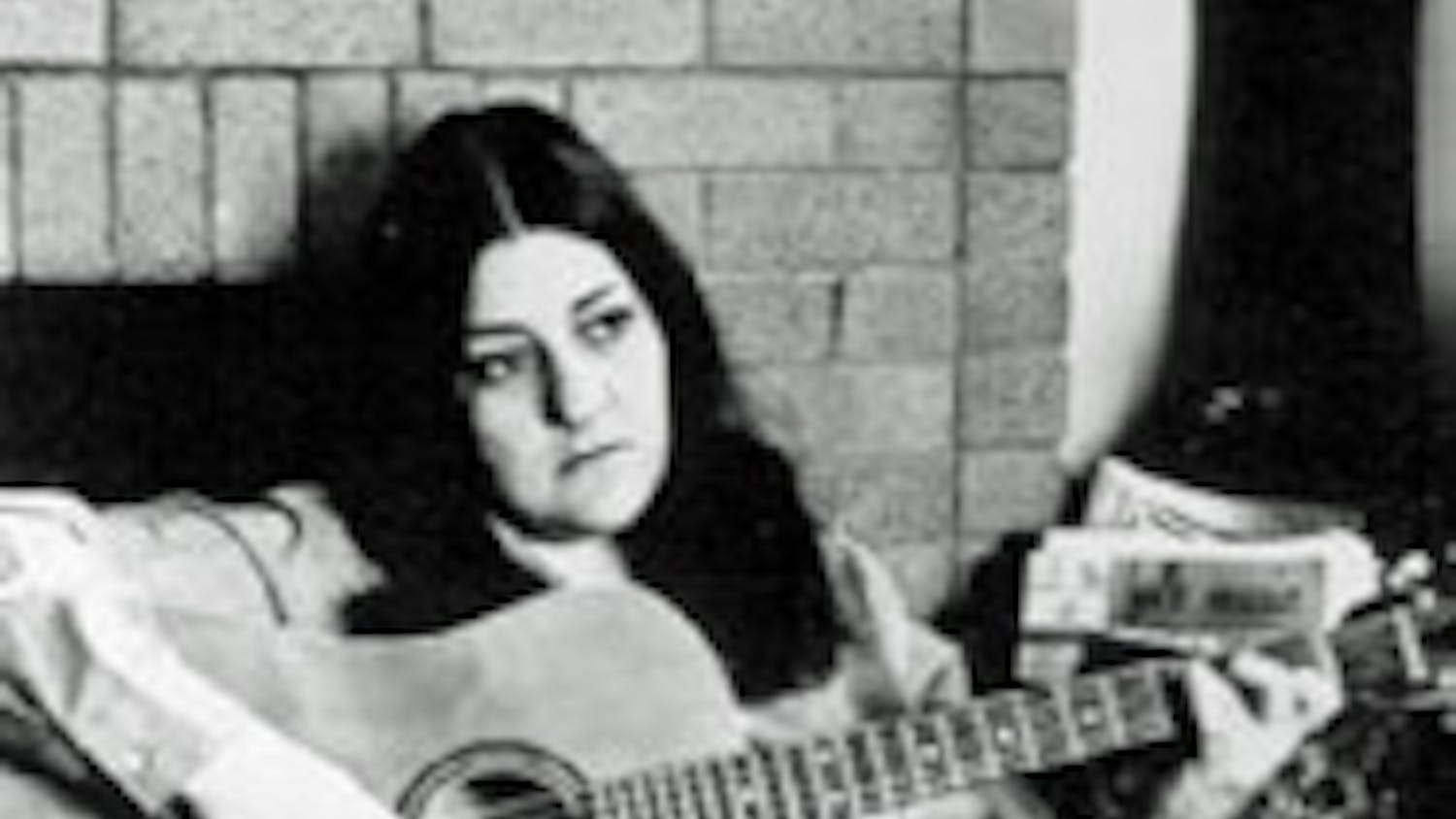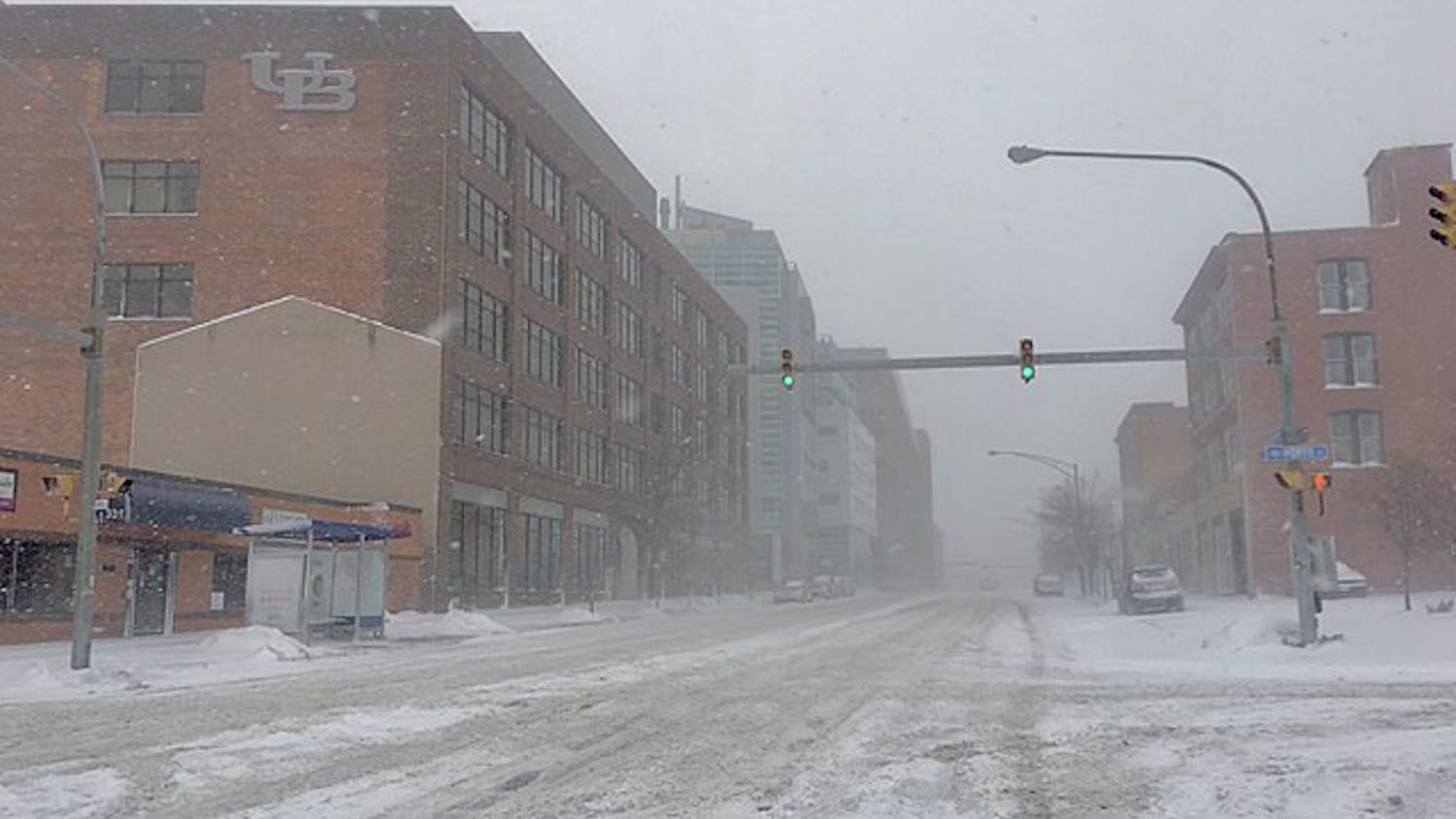Phil Phommala's parents think he's on the UB soccer team.
Actually, he's a cheerleader.
Phommala, a senior geology major, started cheering a year and a half ago when another cheerleader spotted him break dancing in the Student Union. He says he hesitated at first, thinking it was a girls' sport. But after throwing his first girl in the air, he knew that he had fallen in love with the sport.
All of the men on the team agree that compared to other sports they have played in the past – including basketball, football, track, soccer and wrestling – cheerleading takes the most athleticism. They say it is the most demanding sport of them all.
"With other teams they have an off season so they aren't always working," said Michael Sparks, first year graduate student in electrical engineering. "We cheer for football, basketball and when we aren't cheering we are getting ready for nationals. So for us it's like a whole year round thing. And even during the summer we go to camp."
Across the nation, 97 percent of cheerleaders are female, but on the collegiate level, 50 percent are male, according to studies by Joel D. Balthaser. Yet still, the stigma lingers.
"I get a lot of crap from my friends, they always make fun of me for it," said Jared Weise, a junior psychology major who has been cheering since freshman year. "One of my friends would always make fun of me. I brought him out here and had him try it, and he couldn't do it. I take the criticism and turn it around. I like to prove them wrong and show them all it's more than a girls' sport."
What the men do best is stunting. Stunting is the act of throwing a flyer into the air and then catching her with one or two hands. They believe that this is the part of cheering that shows off their athletic ability and strength.
No matter how much these men try, it's difficult to persuade friends and family that the sport is, in fact, not only meant for girls. Phommala has yet to tell his parents of his role on the squad, he feels they wont understand why he chooses to cheer.
"[My parents] think I'm on the soccer team. I play along with it, but all my siblings know I cheerlead. I guess I'm hesitant [to tell my parents] because they are old fashioned," Phommala said. "It's more of a fear because my parents are really old school where they want me in more manly sports than cheerleading. They don't really get the manly aspect of it. It's like when I got my ears pierces or my tattoos, they called me gay and didn't really talk to me, it's more like just out of the ordinary [for them]."
Many people dismiss men's strength as being something useful to cheerleading, or accuse all men who cheer of being gay. These men prove the stereotypes wrong.
"I know very few guy cheerleaders who are actually gay," said Patrick Eck, a junior pre law major who has been cheering for three years.
It takes a large amount of confidence and masculinity to stand against the whispers of those who doubt them, according to Head Coach Amy Zabawa.
"Be true to who you are," Zabawa said. "You have to be confident, you have to be willing to take a risk and the strong will survive."
Zabawa was on the squad as a UB student when the team was composed of 10 females and 10 males, one of which ended up being her current husband.
Ten years ago, the athletics department asked the cheering couple to return to UB as coaches. Their main goal was to revive the coed aspects of the cheer program and get a larger male presence on the team. This year's team is made up of 14 ladies and five men.
"Our first few years coaching we had 12 guys and eight girls," Zabawa said. "In years past, there has always been a stronger male presence. I think, in the past, we had guys who had a lot more friends who were willing to give it a shot. I think in this part of the country, [encouragement for male cheerleading is] not happening in the elementary or high school levels. I think that it's harder in the northeast to get men to join the cheer team."
Besides Sparks, the other four males did not have cheerleading experience in high school. They were persuaded by fellow teammates to tryout and join the team.
Most recently, Weise recruited exercise science major Sam Greenblatt by bringing him to a cheer function knowing that the participation of more male cheerleaders is desired. The girls on the team did "an excellent job of talking him into joining," according to Weise
The men are proud at what they do and aren't ashamed to continue cheering.
"I'm not afraid to tell people I'm a male cheerleader," Eck said. "If people don't think it's funny, they think it's really cool. You tell a girl and some girls think it's hot. I think it's something that most guys never really thought of putting themselves out there to do. Because I'm one of those guys who actually did it, people are always intrigued by what I do."
Email: features@ubspectrum.com





